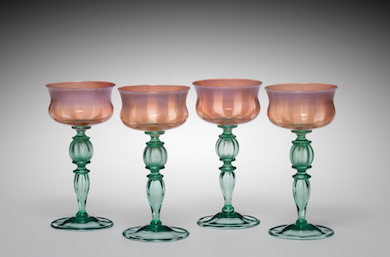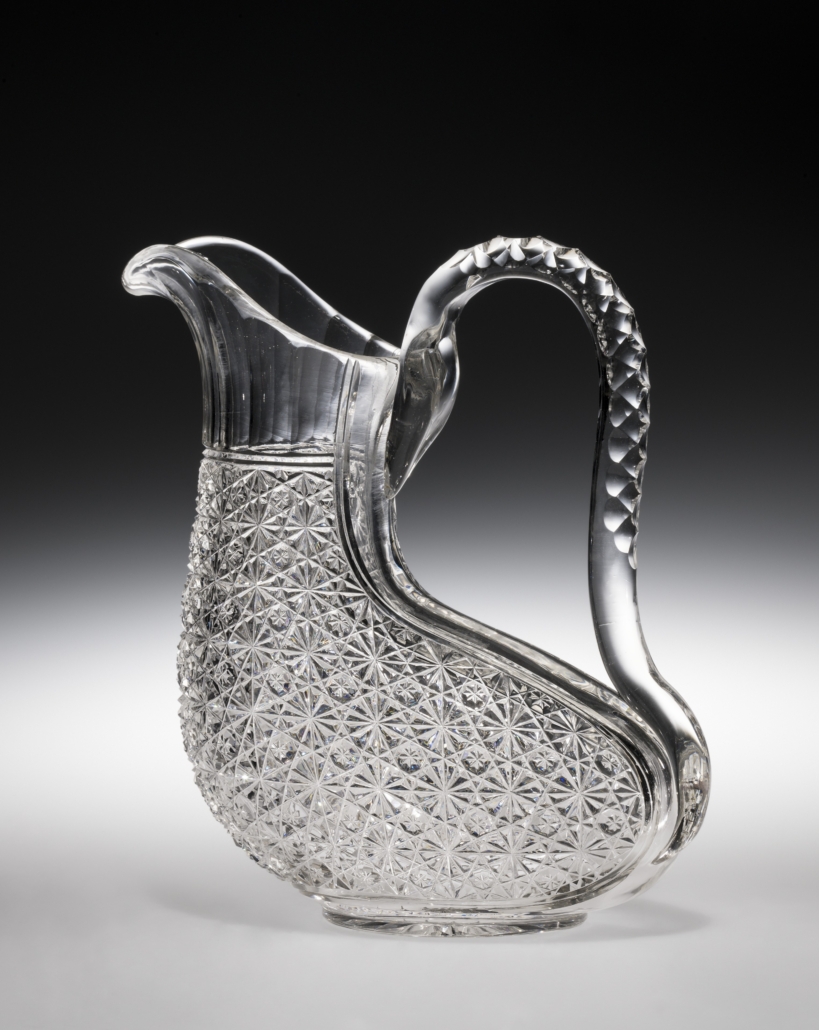
CORNING, N.Y. – The Corning Museum of Glass’ (CMoG), current exhibition titled “Fire and Vine: The Story of Glass and Wine,” explores the deeply entwined relationship between wine and glass. The exhibit will continue through December 31, 2022.
Presenting the art, history, and science of how glass touches wine as it travels from the grape, to the bottle, and to the cup on our table, the exhibit is largely drawn from the Museum’s own holdings, the world’s most comprehensive collection of glass.
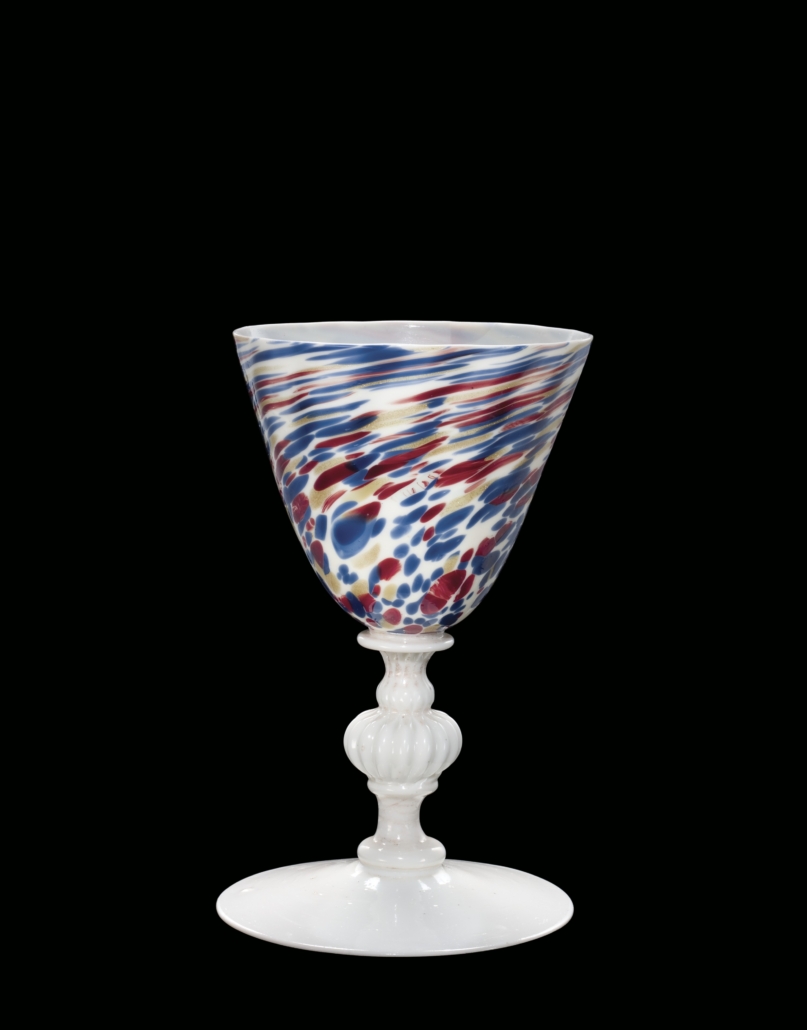
Fire and Vine will also demonstrate how the combination of wine and glass has figured into social gatherings for thousands of years from the lavish feasts of Ancient Rome, to the polite society of 1700s Britain, and to the essential experience within our food culture today.
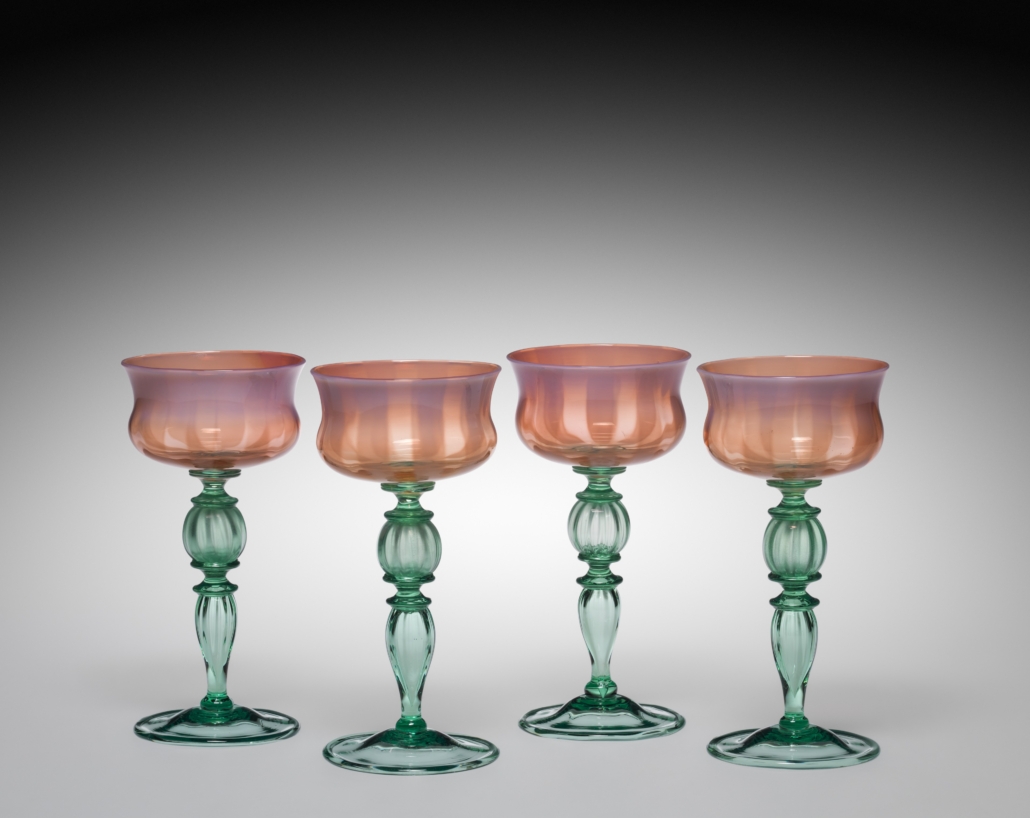
Wineglasses, Tiffany Studios (1902–1932), Louis Comfort Tiffany (1848–1933), Corona, New York, United States, about 1918–1925. 73.4.17 B.
The exhibit is organized by Katherine Larson, curator of Ancient Glass at CMoG. Katherine Larson said, “It is easy to forget that the empty glass cups, pitchers, ewers, and bottles in museum display cases once held lush and luxuriant wine. For Fire and Vine, we have brought together objects that tell the story of how, for more than 2,500 years, the strength, impermeability, and versatility of glass have played an important role in every step of a wine’s journey — factoring into the production, distribution, sale, and ultimately the enjoyment of this intoxicating beverage.”
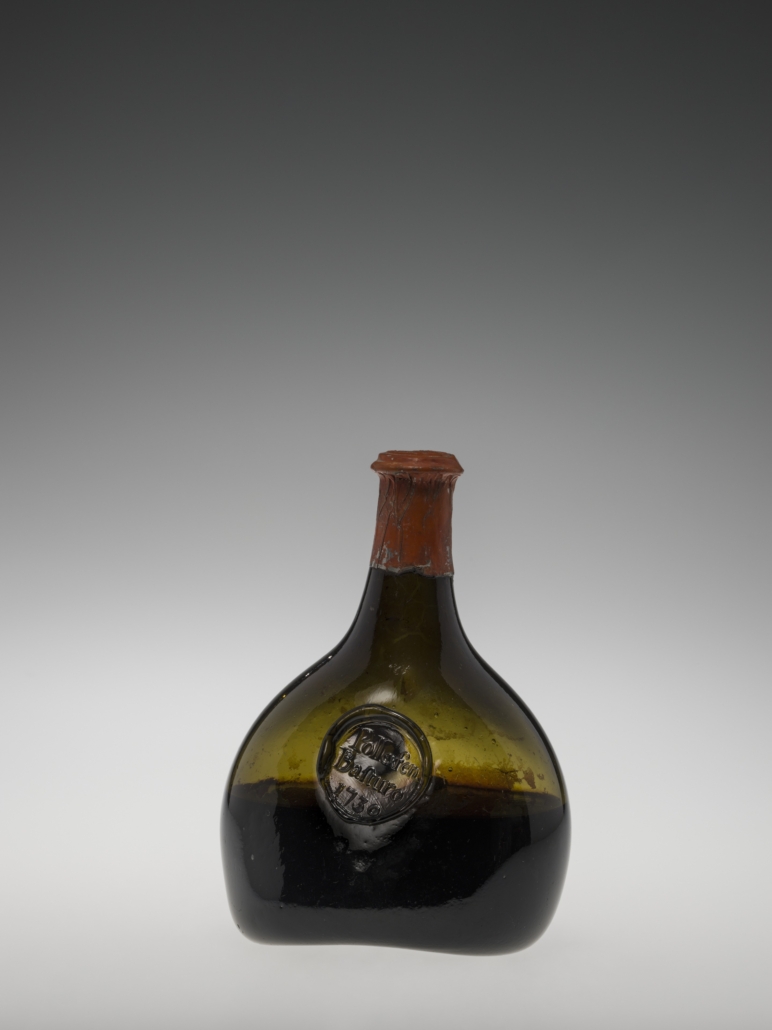
Fire and Vine features a display of dozens of wine glasses from around the world, representing the many styles, tastes, and occasions where wine was part of the festivities. Highlights of the exhibit also include a 2,000-year-old fragment of cameo glass depicting a grape harvest, a still-sealed bottle of wine found in an 18th-century shipwreck off the coast of England, a 17th-century Italian document describing an “almost unbreakable glass jar” that could prevent wine from spoiling, and a set of antique French hydrometers for measuring the alcohol content of wine, among other fascinating objects pulled from the Museum’s permanent collection, as well as from the collection of the Museum’s Rakow Research Library, most of which have seldom been on display.
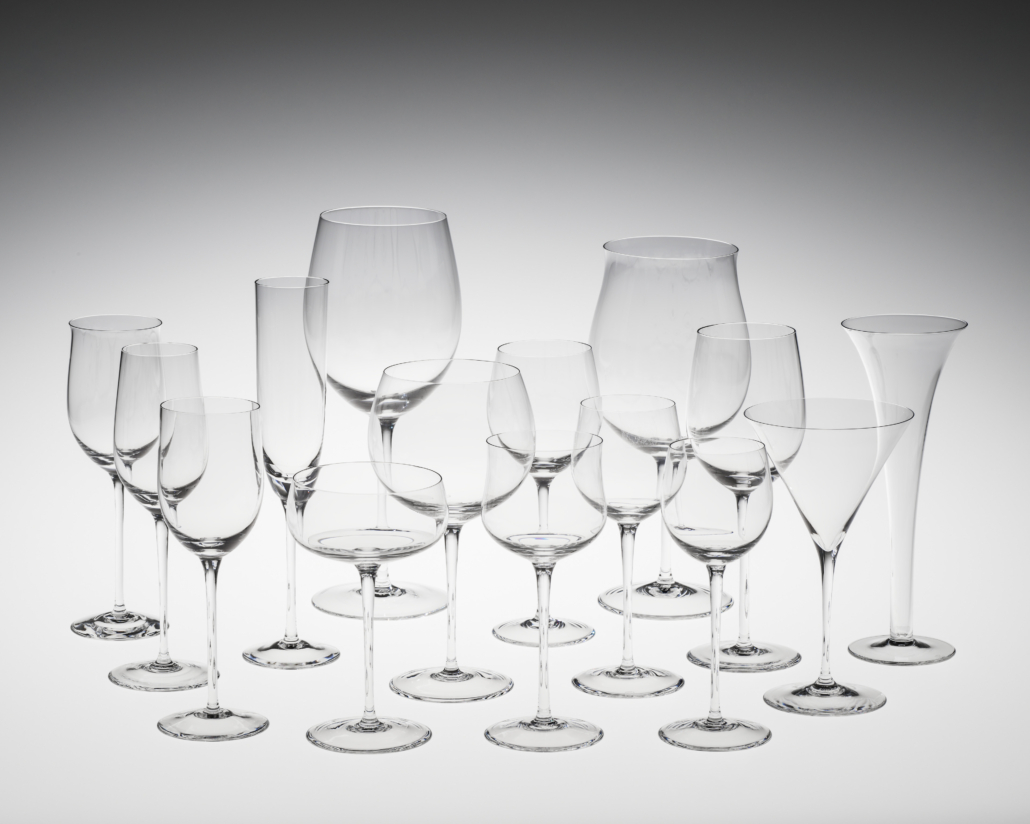
The story of glass and wine has particular relevance in the Finger Lakes of New York State. The Finger Lakes is the home of U.S. Bonded Winery No. 1, established in 1860, and where cold-climate European vinifera grape varieties—like Riesling—were first introduced in eastern North America in the mid-20th century. Concurrent with the growth of Finger Lakes wines, Corning, New York emerged as the “Crystal City,” widely recognized as a world leader for its accomplishments in glass artistry and innovation. Independent entrepreneurial winemakers and glass artists have found a mutual home in this region, building on historical tradition with new creative energy that makes Corning and the Finger Lakes Wine Country a hub for the entwined industries. Recognizing this important shared history, the exhibit will also include objects on loan from the Dr. Konstantin Frank Winery and Pleasant Valley Wine Company, the oldest winery in the Finger Lakes Region, including sealed bottles of historic vintages from these notable wineries. The Glenn H. Curtiss Museum will also contribute to the exhibit.
Visit the website for the Corning Museum of Glass and see its dedicated page for Fire and Vine: The Story of Glass and Wine.
# # #


